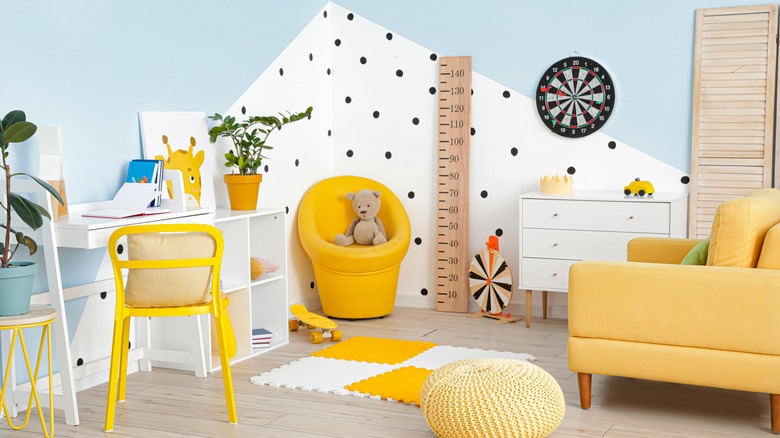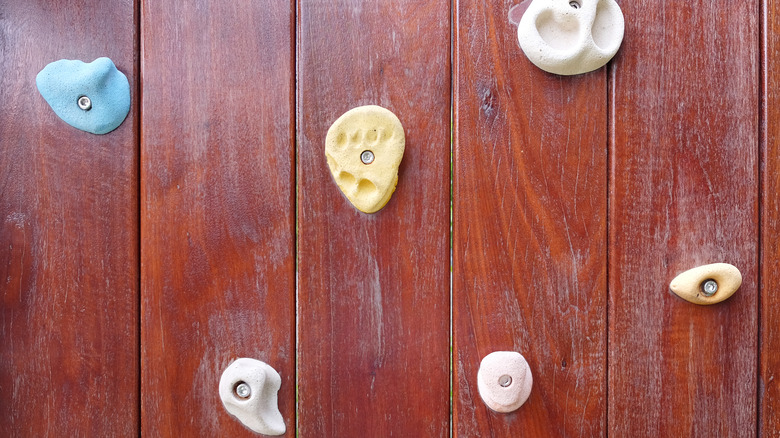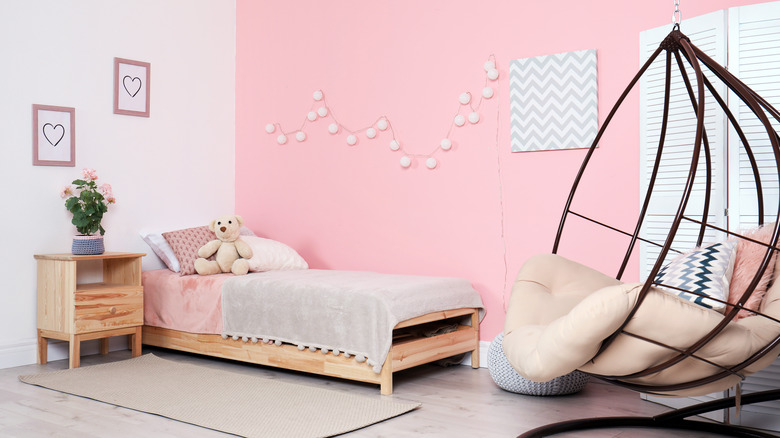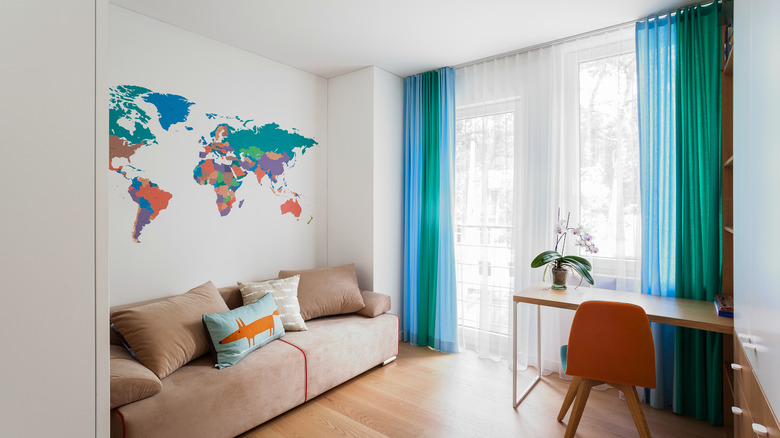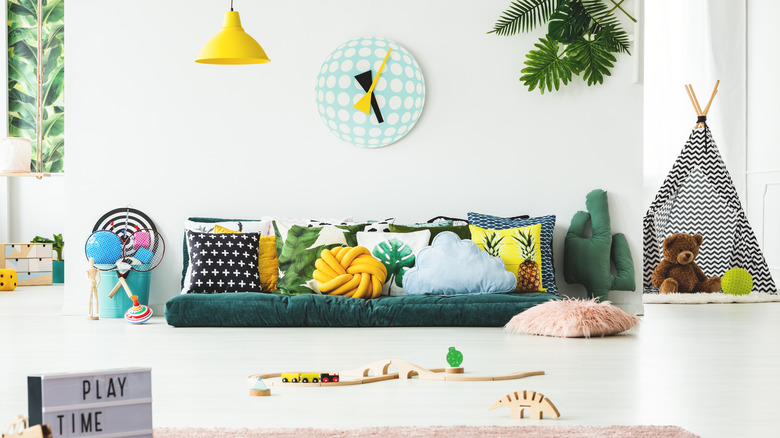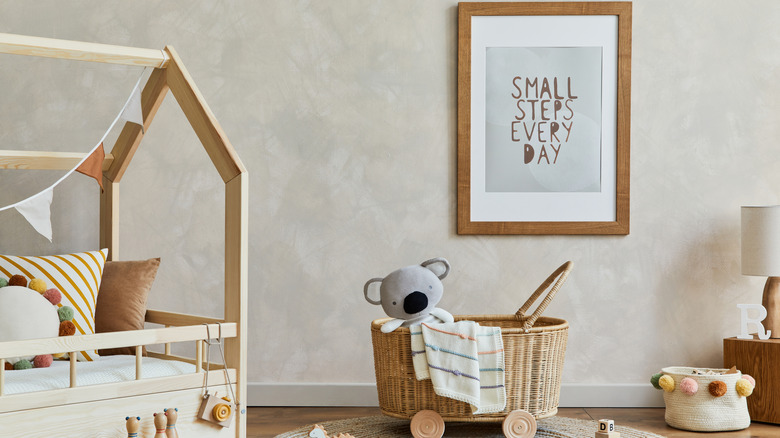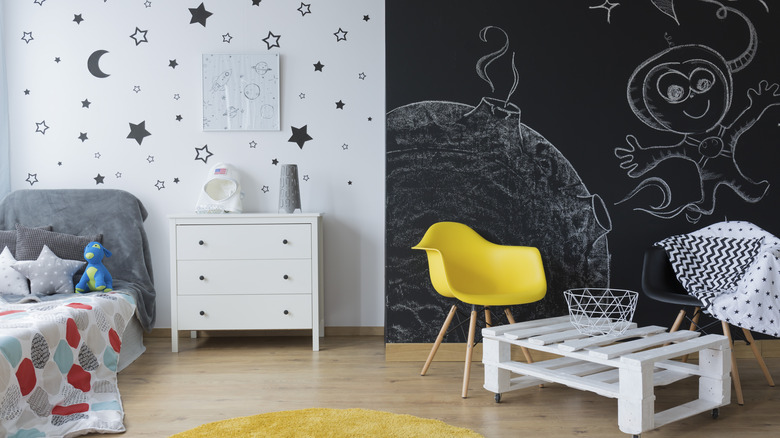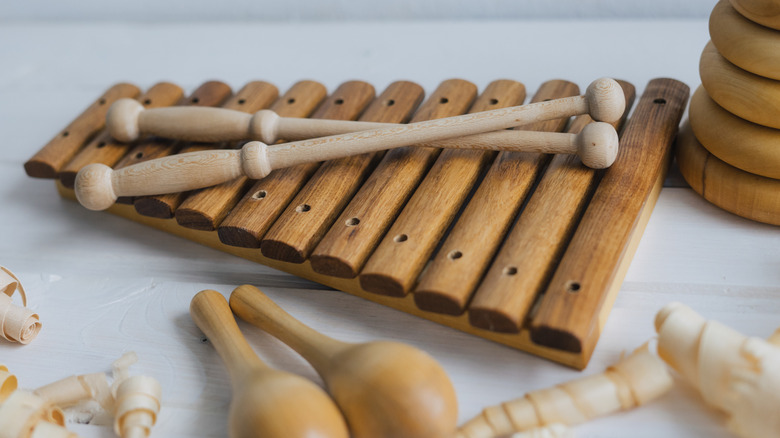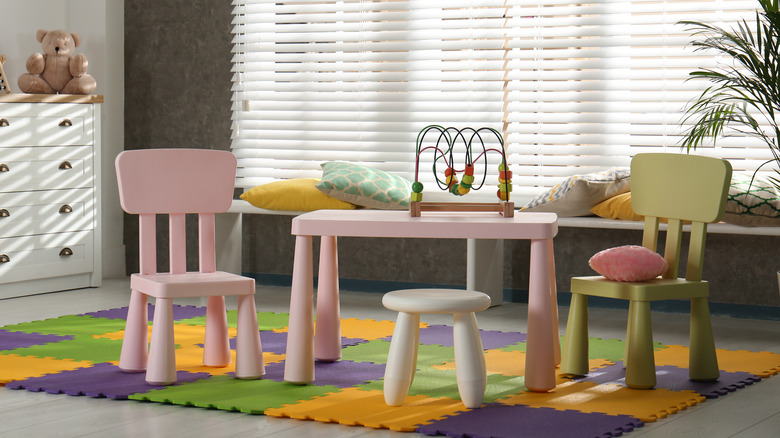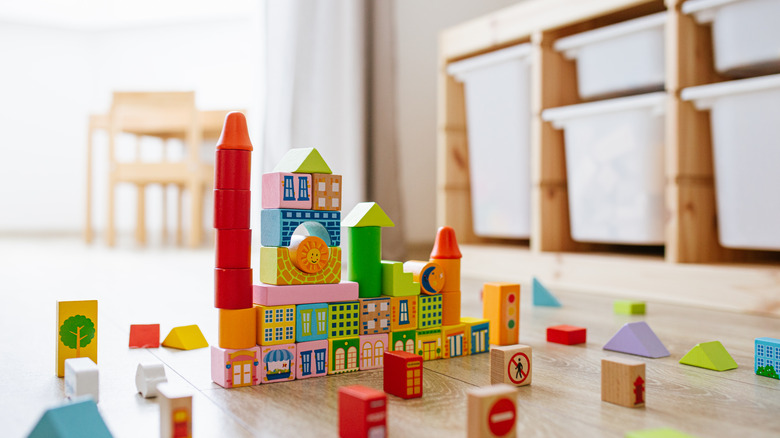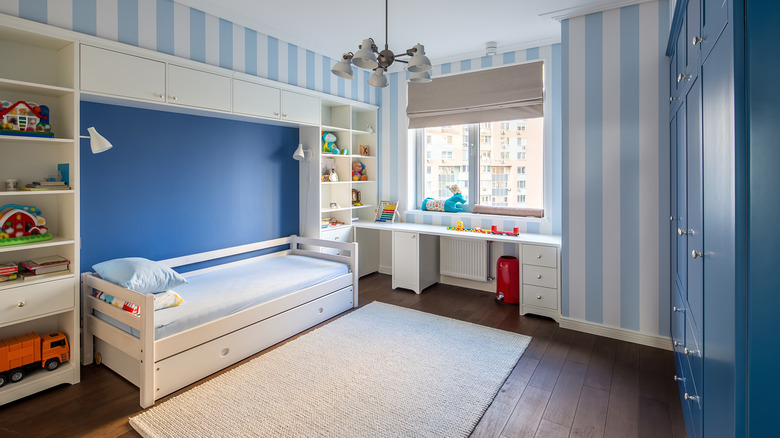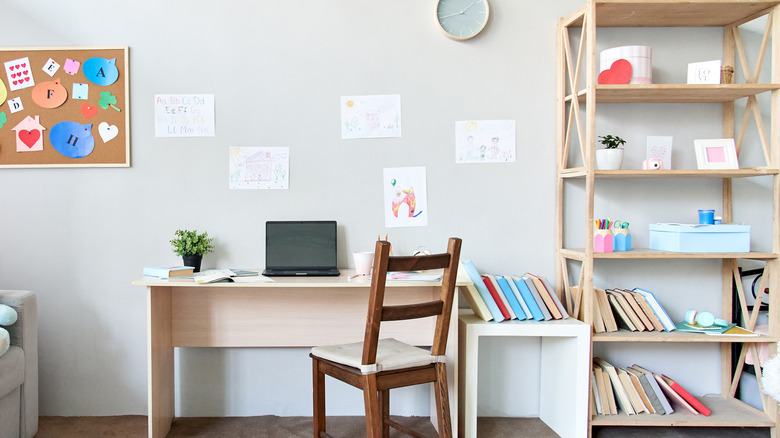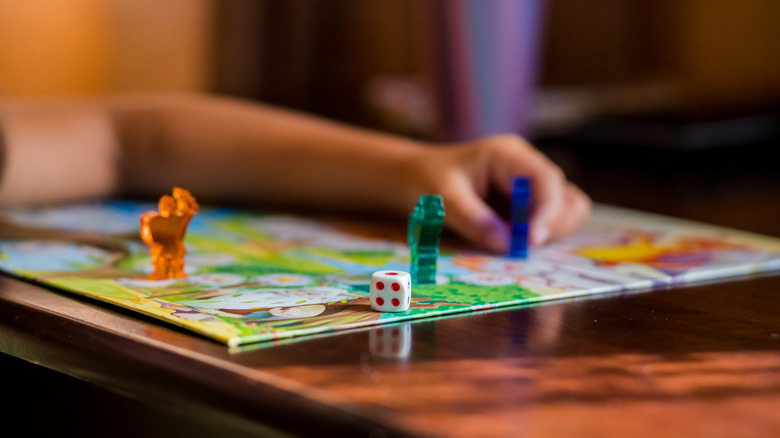Kids' Room Decor Ideas That Help Children Learn
When babies leave their mother's womb, they start to grasp the world through their senses. As their interests change with age, children need stimuli to continue being curious about their surroundings and keep learning. That's why it's up to the parents to help them acquire knowledge through sight, smell, touch, and taste.
Above all, kids are exceptional visual learners. Kaplan claims that the more exposed to colors and pictures babies and toddlers are, the better their research and comprehension skills will be. Thus, it's critical to design your child's bedroom with learning in mind. The atmosphere your little ones experience daily will heavily impact their cognitive development.
The methods and tools you can use to enhance learning in the kids' room are endless. From educational toys and musical instruments to motivational posters and puzzles, versatility is essential. Hence, try to encourage a passion for as many sciences as possible. Before anything, you want to raise kids who are open to discussion and criticism, eager to experiment, and ready to change the world.
So, how can you create a practical, comfortable, and visually-appealing space that encourages learning for all ages? Below is a list of fourteen viable décor ideas you can integrate into kids' bedrooms to spark quality playtime and enhance intellect.
The sky is the limit
Start the kid's room decoration journey from the ceiling and then move on to the bottom. And how else can you teach your children the basics of our galaxy than by showing its grandeur and beauty? Whether you decide to glue stars or paint the Milky Way, this method will help your kids grasp essential astronomical knowledge.
One approach you can take is to create patches of various-sized stars on the ceiling. Electro Homepro suggests using fiber optic to create a starry sky that glows in the dark. This idea is excellent if the overhang is in indigo color. Alternatively, get a toothbrush and splatter glow paint to emulate the night sky.
Artistic souls can make the most of their skills and paint an entire galaxy on the kid's room ceiling. Besides learning about the planets and multiple constellations, your children will enjoy the little universe. Five Star Painting lists the steps that help you recreate the nine planets in the Solar System. Consider plotting out other constellations or the zodiac signs if you want something more intriguing.
Arrange hanging objects
Whether raining clouds, butterflies, or planets, every child loves hanging items from the ceiling. In this step, you have the freedom to choose what you want your kids to learn at a specific age. Once you master the hanging process, swap the items as children grow.
For instance, if your child is still a toddler, you might want to display marine animals, insects, or whatever you aim to teach. Preschoolers will find it easier to learn the alphabet if you hang printed sheets or vinyl lettering. The same goes for numbers. According to Wiki How, using adhesives such as sticky tack or tape is the ideal approach to display visuals because it is cost-effective and won't damage the walls.
Yet, moderately heavy objects require a different hanging strategy. In most cases, hooks, thumbtacks, or nails will do the job. To avoid drilling or making holes, seek alternative means like exposed beams, light fixtures, or a stretched rope.
Set things in motion
From the earliest age, you'd want your children to stay active and appreciate the importance of sports. You might think doing sports inside is not the brightest idea. But you might be wrong, as there are numerous ways to engage kids in activity without demolishing their room.
Surprisingly enough, you can create an interior climbing wall. Twin Pickle outlines unique ways to incorporate climbing walls in the children's room without compromising safety. The steps can go on beds, bookcases, or another element where tags and handrails are secure. Combine this idea with sports nets, and you'll get the perfect bedroom makeover no kid would want to leave.
Another way to involve kids in sports is to dedicate a corner to bowling, golf, or darts. Scavenge the local stores, and you will find many mini sets ideal for the area, assuming you have enough storage space. Since these variants are portable, you can switch them depending on your child's age and interests.
Be creative with the seating area
Arranging a dedicated seating and learning corner is critical for your children's development. Here, you have a myriad of options to choose from depending on age and interests. What matters most is to make the spot as comfy and welcoming as possible to stimulate frequent reading.
Alternatively, go with the typical reading and study area. MomTrends believes a cozy reading nook will stimulate your kids to read more often. You only need a warm blanket and a comfy bean bag to let the little reader snuggle. Similarly, consider investing in a canvas tent that, apart from reading, can serve as a playhouse.
Hanging chairs can also help kids relax and boost their imagination. If a chair can hover, why can't there be magic carpets and sky castles? According to Hanging Chairs, these products are easy to maintain and make the perfect reading spot. Plus, children can stretch out and swing while turning the pages, thus staying focused for prolonged periods.
Maps are a game-changer
Teach kids the passion for exploration and travel from an early age by displaying a world map on one of the walls. The bigger the wallpaper is, the more exciting and inviting it will be for young explorers. Plus, your choice of maps is never-ending as they can go back in time, explore species, and portray flags and capitals.
Let's brainstorm the options you have with map wall décor. Petit & Small abounds with ideas on stimulating an adventurous spirit or providing the perfect setting for storytelling. The fun is inevitable, whether you go with a feature wall, smaller murals, or interactive maps and globes.
Another aspect you can't neglect is the content of the map. For instance, if you want to boost interest in learning about the past, you might want to order a dinosaur map. It's a good idea to look for versions with clearly labeled boundaries and significant landmarks. You may also get a wallpaper that portrays animals in their natural habitats around the globe. Last, consider a map that contains the capitals and country flags to teach kids the basics of geography.
Don't forget clocks
You can't go wrong even if you get crazy with clocks. Time-telling and differentiating between time zones are vital skills for your kids' mental development. Consider setting up digital and analog alternatives, but also get a sundial or an hourglass to teach technological advances.
The role of clocks is to teach kids how to tell the time. Analog variants are ideal for the purpose because children should understand the hour and minute hand. And while you may think the teaching process is less time-consuming with digital clocks, Fun With Clocks believes these should get introduced later.
Once kids learn the concepts of elapsed and future time, go a step further and combine several different clocks. Place them next to the world map wallpaper and set them to multiple time zones. If a family member lives in another country, this approach will help you explain how time zones and meridians work.
Posters are always in trend
When speaking of educational posters, your options are limitless. You can choose between displays with shapes, motivational quotes, word building, or multiplication tables. Swap the visuals to match their age as your children grow and change interests and hobbies.
For toddlers, hang posters that show colors, animals, fruit, and vegetables. As they outgrow these concepts, replace them with the alphabet, numerals, and elementary math operations. Moreover, once kids learn to read, PrintMePoster suggests putting up inspirational quotes or photos. Choose motivational lines from role models from different backgrounds to make your children aware of diversity.
If you want to stick to the educational pattern, why not pin a word-building or multiplication table poster? Visual displays help with learning repetition and faster acquisition. Other suggestions include galaxy pictures, instruments, music notes, or movie genres. Last, consider your kids' interests and choose prints that represent their hobbies. This way, they can nurture and upgrade their skills.
Experiment with blackboard and corkboard walls
Another way to adorn a wall for educational purposes is to install a blackboard wallpaper. Or take a more cost-effective path, and create a corkboard with a few tools. The benefit of having such boards is that they stimulate your children's imagination and help them visualize concepts as they learn. Plus, a dedicated spot for writing will discourage kids from damaging the walls.
The first idea requires setting up a sizeable place for drawing. The No Pressure Life describes what it takes to create a magnetic blackboard. The essential materials include a gypsum finishing coat, magnetic and blackboard paint, foam rollers, and some tape.
Alternatively, you may opt for a corkboard wall for pinning homework, visual aids, or study posters. If you have preschoolers, hang up their creations. Chrissy Marie Blog shares a DIY project you can recreate in just one day. The supplies you'll need are a roll of cork, long brass tacks, scissors, a hammer, and a level. A dry-erase board made of PVC or acrylic is another solid pick.
Music is inevitable
The benefits of learning about and playing a musical instrument are immense. From improved memory and hand-eye coordination to listening and comprehension skills, music helps children grow happy and intelligent. Hence, consider investing in miniature instruments of your choice.
One thing you might do to help your little ones develop a love for music is to set up a dedicated corner. Victoria Boler explains that these spaces can come in different sizes, shapes, and involvement levels. However, ensure you incorporate a real instrument like a keyboard and a few others made of household objects, like pots and spoons. A listening device with a collection of familiar and new music is essential, too.
Moreover, if your kid is learning to play an instrument, hang music sheet wallpapers and album covers on the walls. As Kids Interiors suggests, a stage equipped with a microphone and speakers where you can perform with your child is another splendid idea.
Get lost in puzzles
Puzzles are an incredible source of learning due to the versatility of themes, textures, and materials. They come in many sizes and are excellent for all ages. Moreover, jigsaw puzzles help develop multiple skills, making them the ideal educational play activity in the bedroom.
For toddlers, experts suggest knob and peg versions with only a few pieces to teach motor skills, perseverance, and hand-eye coordination. Chunky puzzles with bulky pieces are also advisable for strengthening hand muscles, advises Premium Joy. As the child grows, switch to frame and floor jigsaw puzzles with up to a hundred pieces to promote problem-solving skills.
Elementary pupils are usually fascinated by 3D puzzles that can build a ship, globe, or house. Unlike 2D versions, in this case, kids assemble a three-dimensional shape made of plastic, wood, or foam. As a result, children develop spatial relations and boost their cognitive development, claims Empowered Parents. Also, puzzle building is a relaxing activity that encourages mindfulness and confidence. To tie learning into the decor in your child's room, pick a rug that comes as a jigsaw puzzle and have a hand in its design.
Invest in open-ended toys
No children's bedroom can do without toys, and there's no reason why you should neglect quality playtime. However, be extra careful when making the ultimate selection. When purchasing toys, go for open-ended toys that encourage innovation, creativity, and multi-tasking. Contrary to close-ended toys, these grow with your kids and usually have more than one use.
Since you aim for an educational sanctuary, let's explain what open-ended toys are and how kids benefit from them. According to The STEM Kids, these items encourage exploration, nurture creativity, and spark passion for scientific fields. Moreover, open-ended toys help children be more independent and develop better relationships and social skills.
A few examples include sensory sand, magnetic tiles, building bricks, art supplies, cars, and doll houses. This Intentional Home claims that kids can use Lego bricks, felt pieces, and wooden train sets without limits. Conversely, close-ended toys are excellent for sequencing, concentration, and self-correction. Whatever your preference, restrict the number of toys in each category to ensure that you'll have fewer toys to declutter as they grow.
Teach proper organization skills
The less clutter in the room, the more organized your kids will grow. So, besides urging them to keep things in order, you can strengthen learning through simple chores and activities. Start by introducing checklists, calendars, and planners as décor in their room. Allowing children to mark dates, set goals, and cross off days makes them feel involved and become responsible individuals.
As Scholastic explains, simple checklists will teach your children how to organize their time and strategize tasks. Assigning sorting chores and establishing a homework routine will further boost their ability to plan and set objectives. Finally, urge your kids to start collecting items of their choice (leaves, stamps, or insects). This strategy is an excellent way to teach classification principles.
Setting up systems in the house is also critical. For example, you can keep a family calendar or planner, states VisiHow. This approach will help teenagers keep track of assignments, extra-curricular activities, and tests.
Make space for a bookshelf
Regardless of the children's age, encouraging them to love books can send them on the right academic path. Kids who read for pleasure perform better at school, so you'll want to develop this habit early in childhood. Thanks to the versatile selection of genres, parents can even find imaginative books for babies.
So how do you begin introducing bookshelves into the children's bedroom? Plan a corner from the onset. It should be next to the reading nook and include a moderately-sized wooden shelf that displays all the editions you possess. This way, kids can grab whatever book steals their attention, claims Room To Grow. Board and picture books are first on the list when your kid is still a baby. Later on, start buying paper books and stories.
Another strategy children find amusing involves inviting literary characters to the room. For example, you can hang illustrative decals and tell little kids stories through pictures. The Little Prince is a great character to consider.
Finally, bookshelves bring many benefits for the kids, states Lady's Decor. Besides encouraging reading, they provide a sense of privacy, safety, and belonging. Plus, children can add a personalized touch to the display and add family photos, ornaments, and souvenirs.
Set up a board games corner
By playing board games, kids develop numerous skills that will be useful later in life. While having fun, children learn how to use different strategies and techniques beyond the board. Moreover, the quality bonding time you'll spend offers you a unique opportunity to work on kids' physical and intellectual sides.
Even if the room isn't too spacious, you can make the board game area flexible and keep the games on the bookshelf. Whenever you and your kid feel like playing, pick your favorite and slip into the non-technological realm of imagination. According to HexaGamers, board games improve socializing skills. They also help kids develop speech, reading, memorizing, teamwork, and organization.
Furthermore, the more complex the games are, the better your children will learn to follow the rules. Aspire Learning Academy believes that strategy games teach you to work creatively and strategically within the set rules. Also, children will learn to accept defeat and celebrate success.
Last, why not turn the bedroom wall into an actual game? Get a road print for your little ones to drive mini cars on the wall. Add the tracks, a few crossroads, and some obstacles, and there you go. Alternatively, you might want to stick the pattern on the floor or buy a rug that simulates a busy road.

